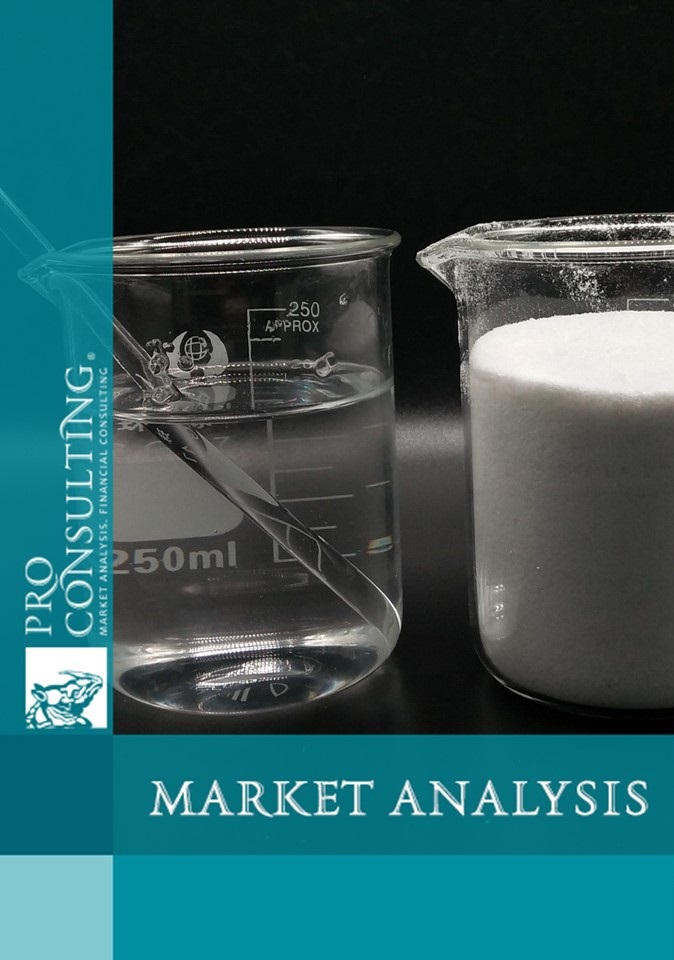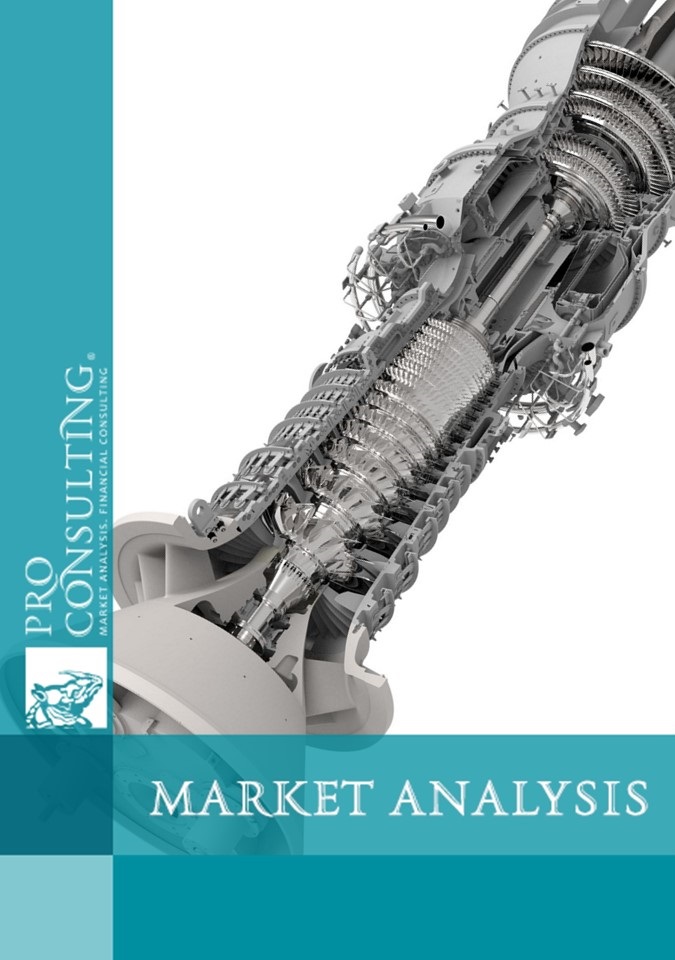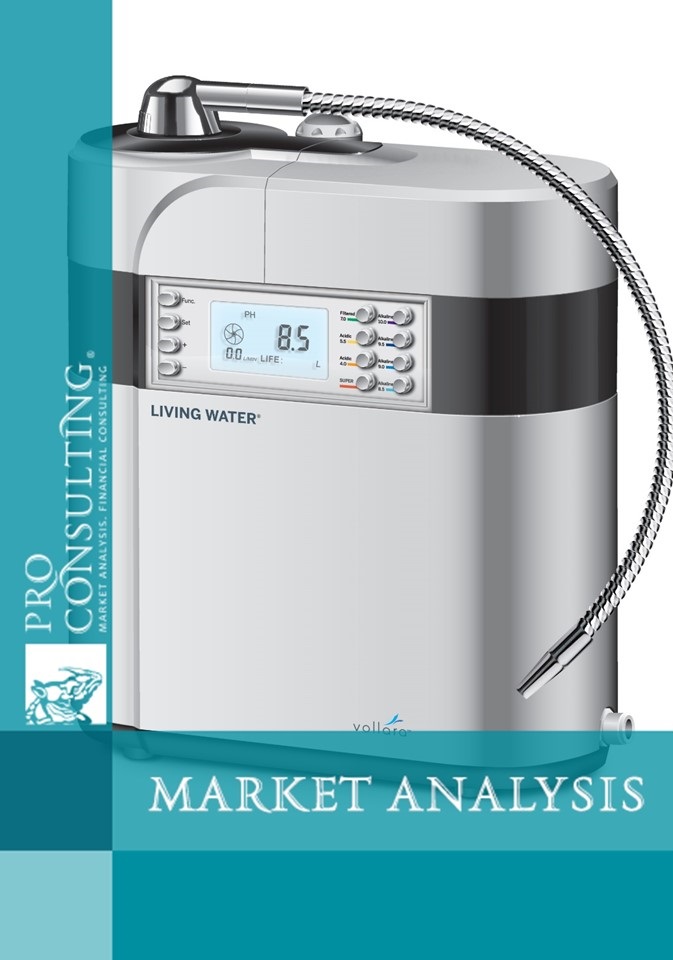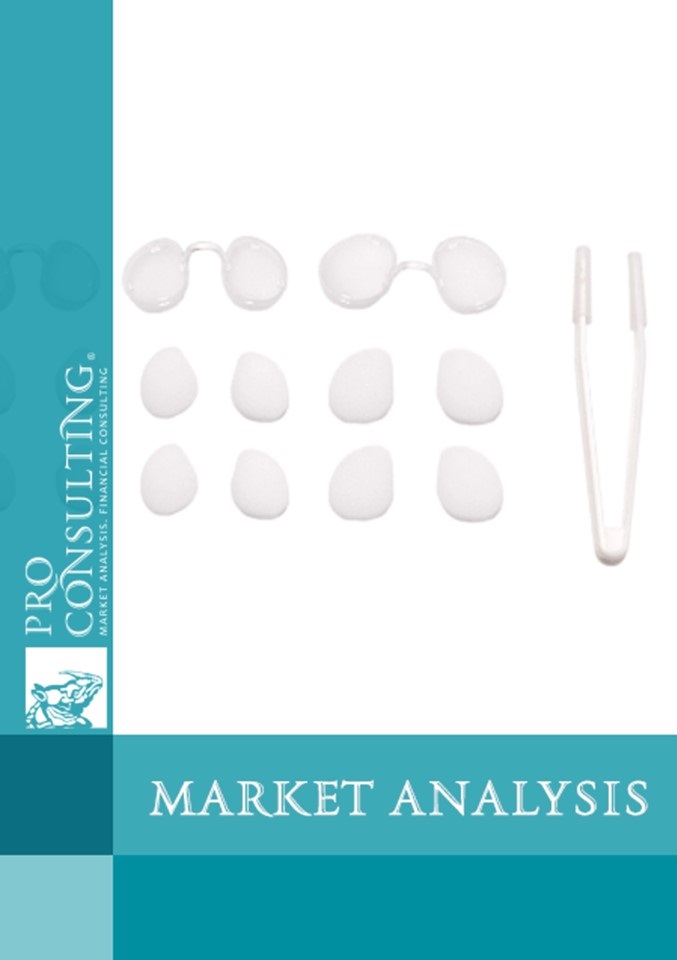Analysis of the coagulant market for water treatment in Romania, Slovakia, Hungary, Poland and the Czech Republic. 2022 year

| Date of Preparation: | August 2022 year |
| Number of pages: | 53 Arial, 1 spacing, 10 pins |
| Graphs and charts: | 39 |
| Tables: | 24 |
| Payment method: | prepayment |
| Production method: | e-mail or courier electronically or in printed form |
| Report language: | ukrainian, russian, english |
- This report can be updated and customized based on your business goals; you can also purchase part of report (no less than 50%) at a more affordable price
- Failed to find your market research report? - contact us
- You can also order feasibility study and business plan for your business idea




Detailed contents:
1. General characteristics of the market
1.1. Market description (product specifications, applications, classifiers)
1.2. Analysis of market development trends (factors of influence and their manifestation in the studied period, development problems, impact of COVID-19, wars in Ukraine and imposed sanctions against the Russian Federation))
1.3. General market indicators, calculation of market capacity in 2018-2022 (production + import - export) (2022 - estimated indicator)
1.4. Segmentation and structuring of the market (by types of products, areas of application, origin, size of regional markets)
2 State regulation of the industry. Import and export duties
3. Production of products in the studied countries in 2018-2022.
3.1. Dynamics of production in quantitative indicators
3.2. Dynamics of production in value indicators
4. Main market operators (manufacturers and importers)
4.1. List of main market operators and their description
4.2. Market shares of the main market operators
5. Foreign trade
5.1. Export of aluminum hydroxychloride from the studied countries (in particular between countries) in 2018-2022. (Volumes, structure, geography of supplies, main customers (list based on data from exporters), prices)
5.2. Import of aluminum hydroxychloride to the studied countries (including between countries) in 2018-2022. (Volumes, structure, geography, main suppliers (list based on assortment), prices)
6. The range of products presented on the market (the most common products, delivery format)
6.1. Price and pricing in the market. Average current prices for products
7. Branding and advertising (analysis of competitors' positioning on the market, presence in promotion channels)
8. Analysis of consumption over the market
8.1. The main groups of product consumers, their description and the specifics of using coagulants. List of main consumers in the studied countries.
8.3. Analysis of product selection criteria (use of coagulants of different chemical composition and its justification); procurement format (tender, direct contracting, etc.)
8.4. Structuring and segmentation of consumption (by regions, industries)
8.5. Product/service need (calculation of product consumption potential based on an analytical model)
8.6. The degree of consumer satisfaction (analysis of product reviews)
9. Product sales channels (description and evaluation of the sales structure by channels)
10. Conclusions. Predictive indicators
10.1. Conclusions and forecast trends of development of the markets of the studied countries
10.2. Construction of market development hypotheses. Forecast indicators of market development in 2022-2026.
10.3. Recommendations for market development
10.3.1. Expediency of output
10.3.2. Optimal product portfolio
10.3.3. Optimum sales channels
11. Investment attractiveness of the industry
11.1. SWOT analysis of the Customer's company on the market
11.2. PESTLE analysis of factors affecting the market
11.3. Existing risks and barriers to market entry. Building a market risk map
List of Tables:
1.2.1 State and structure of water resources of the studied countries
1.3.1 Aluminum Hydroxochloride Market Capacity in Hungary, 2018-2022
1.3.2 Romania aluminum hydroxochloride market capacity, 2018-2022
1.3.3 Aluminum Hydroxochloride Market Capacity in Poland, 2018-2022
1.3.4 Aluminum hydroxochloride market capacity in the Czech Republic, 2018-2022
1.3.5 Slovakia Aluminum Hydroxochloride Market Capacity, 2018-2022
4.1.1 The main operators of the coagulants market for water purification by country and specific activity
5.1.1 The volume of exports of aluminum hydroxychloride from Hungary, 2018-2022
5.1.2 The volume of exports of aluminum hydroxychloride from Romania, 2018-2022.
5.1.3 Export volume of aluminum hydroxychloride from Poland, 2018-2022.
5.2.1 The volume of imports of aluminum hydroxide chloride to Hungary, 2018-2022.
5.2.2 Volume of imports of aluminum hydroxide chloride to Romania, 2018-2022.
5.2.3 The volume of imports of aluminum hydroxide chloride to Slovakia, 2018-2022.
5.2.7 The volume of imports of aluminum hydroxide chloride to Poland, 2018-2022.
5.2.8 The volume of imports of aluminum hydroxide chloride to the Czech Republic, 2018-2022.
7.1 Promotion channels used by the main market operators in the studied countries
8.1.1 List of potential consumers of coagulants for water treatment in Hungary
8.1.2 List of potential consumers of coagulants for water treatment in Poland
8.1.3 List of potential consumers of coagulants for water treatment in the Czech Republic
8.1.4 List of potential consumers of coagulants for water treatment in Romania
8.1.5 List of potential consumers of coagulants for water treatment in Slovakia
8.5.1 The potential of aluminum hydroxide chloride consumption by industrial enterprises
11.1.1 SWOT analysis matrix
11.3.1 Segmentation of market risks
11.3.2 Water Treatment Coagulants Market Risk Map in the Study Countries
List of graphs and charts:
1.2.1 Water withdrawal from surface and underground waters in 2021, million m3
1.2.2 Current and projected population in the studied countries in 2020 and 2050, level of urbanization, %
1.2.3 Dynamics of the price index of producers of inorganic chemicals, 2018-2022.
1.4.1 Water treatment coagulants market segmentation by product type, 2021, %
3.1.1. Production of aluminum hydroxychloride in quantitative indicators, 2018-2022, tons
3.2.1 Production of aluminum hydroxychloride in value indicators, 2018-2022, thousands of euros
4.2.1 Production capacities of the main operators of the aluminum hydroxychloride market in Hungary
4.2.2 Production capacities of the main operators of the aluminum hydroxychloride market in Poland
4.2.3 Production capacities of the main operators of the aluminum hydroxychloride market in Romania
5.1.1 Export prices for aluminum hydroxychloride in Hungary, €/kg
5.1.2 Export prices for aluminum hydroxychloride in Romania, €/kg
5.1.3 Export prices for aluminum hydroxychloride in Poland, €/kg
5.2.1 Import prices for aluminum hydroxychloride in Hungary, €/kg
5.2.2 Import prices for aluminum hydroxychloride in Romania, €/kg
5.2.3 Import prices for aluminum hydroxychloride in Slovakia, €/kg
5.2.4 Import prices for aluminum hydroxychloride in Poland, €/kg
5.2.5 Import prices for aluminum hydroxychloride in the Czech Republic, €/kg
6.1.1 Average prices for aluminum hydroxochloride in the studied countries
6.1.2 Chemicals and Related Products Price Index: Hydrochloric Acid and Water Treatment Formulations, 2022
8.4.2 Structure of consumption of coagulants in the studied countries
8.5.1 Scaling of market demand
8.5.2 Potential consumption of aluminum hydroxide chloride by households
10.2.1 Forecast of the capacity of the aluminum coagulants market in Poland, 2018-2022, tons
10.2.2 Forecast of the market capacity of aluminum coagulants in Hungary, 2018-2022, tons
10.2.3 Forecast of aluminum coagulants market capacity in Romania, 2018-2022, tons
10.2.4 Forecast of the market capacity of aluminum coagulants in the Czech Republic, 2018-2022, tons
10.2.5 Forecast of the capacity of the aluminum coagulants market in Slovakia, 2018-2022, tons


